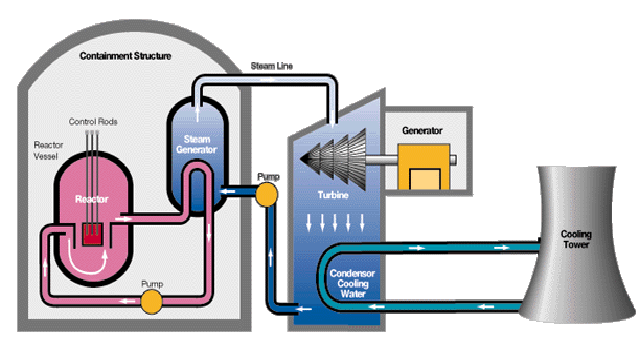The Pressurised Water Reactor
The pressurised water reactor (PWR) is the design used in most nuclear power stations in the west. These use water as the moderator, to slow down neutrons produced in fission to a speed at which they are likely to induce further fission reactions. This water flows in a pressurised 'primary loop' over the reactor core. The primary loop water circulates and heats water in a secondary loop via a heat exchanger, producing steam which drives the turbine. This system avoid mixing of liquid in the primary and secondary circuits, desirable since the liquid in the primary circuit is highly radioactive.

The PWR can operate at high pressure and temperature, about 160 atmospheres and 315 C, allowing higher efficiencies than other designs. They are safer than many other designs, as an increase in core temperature will cause more of the water in the primary circuit to turn to steam. This will mean neutrons are slowed down less, so remain above the speed at which they are most likely to produce further fission reactions. This negative feedback makes the PWR design very stable, so stable in fact that the design is commonly used in nuclear submarines, and to power steam powered catapults on aircraft carriers.